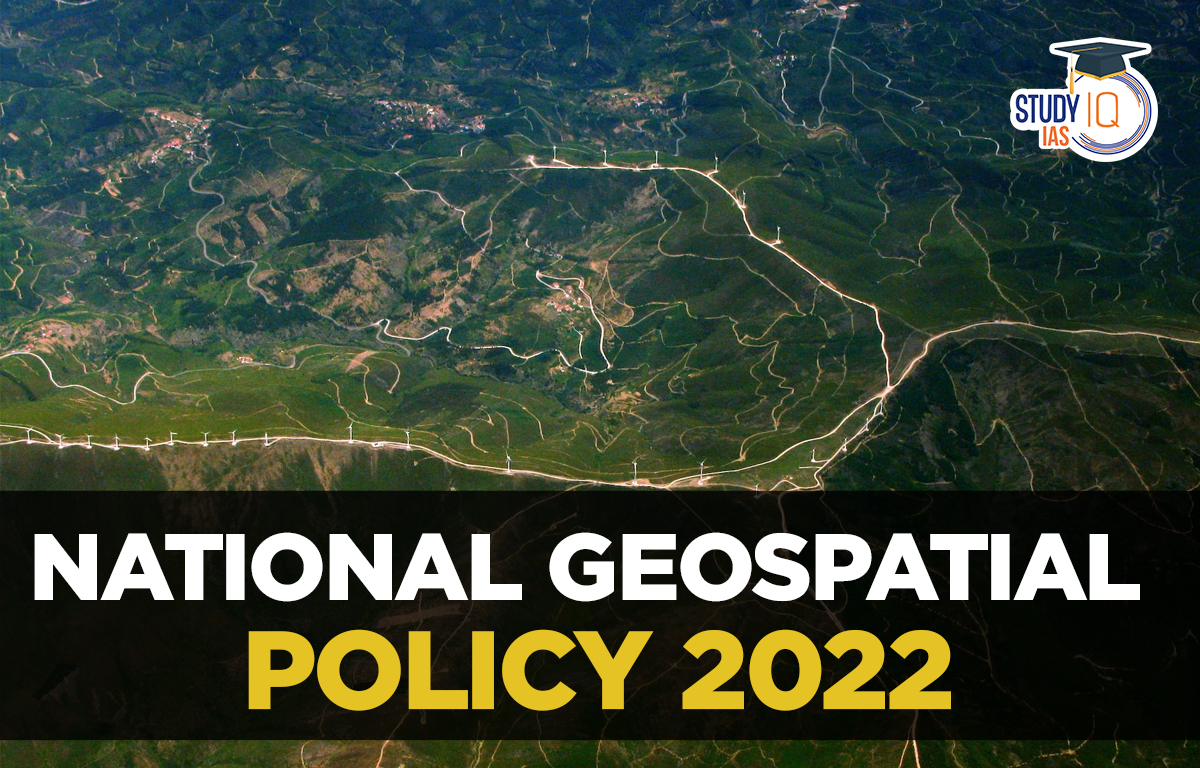Table of Contents
Context: The Ministry of Science and Technology has notified the National Geospatial Policy, 2022.
What is Geospatial Technology?
- Geospatial technologies is a term used to describe the range of modern tools contributing to the geographic mapping and analysis of the Earth and human societies.
- Geospatial technologies mainly consist of Geographic Information System (GIS), Remote Sensing (RS), Global Positioning System (GPS) and 3D Modelling etc.
- Applications: Many fields use geospatial technologies, including cartography, transportation, logistics, agriculture, urban planning, meteorology, disaster management and healthcare etc.
- Stats IQ – India’s Geospatial sector:
- Growth: Indian Geospatial Economy is expected to cross Rs 63,100 crore by 2025 at a growth rate of 12.8%.
- Employment: India’s geospatial sector currently employs approximately 4.7 lakh people
- Robust ecosystem: India has a robust ecosystem in geospatial, with the Survey of India, ISRO, remote sensing application centres (RSACs), and the National Informatics Centre (NIC).

Key Highlights of National Geospatial Policy 2022
Objective
- To strengthen the Geospatial sector to support national development, economic prosperity and a thriving information economy.
Vision
- To make India a World Leader in Global Geospatial space.
- To develop a coherent national framework and leverage it to move towards digital economy and improve services to citizens.
- To enable easy availability of valuable Geospatial data to businesses and general public.
- To have a thriving Geospatial industry in the country involving private enterprise.
Goals
- Year 2030 goals:
- High resolution topographical survey and mapping & mapping (5-10 cm for urban & rural areas and 50-100 cm for forests and wastelands).
- High accuracy Digital Elevation Model (DEM) for the entire country (25 cm for plain, and 1-3 metre for hilly and mountainous areas).
- Enhance capabilities, skills and awareness to meet the future needs of the country.
- Year 2035 goals:
- High resolution/accuracy bathymetric geospatial data for inland waters and sea surface topography of shallow/deep seas to support Blue Economy.
- Survey and mapping of sub-surface infrastructure in major cities and towns.
- National Digital Twins for major cities and Towns
Strategy and Approach
- Atmanirbhar Bharat: The policy will provide a conducive environment for Indian companies to make India self-reliant in geospatial systems.
- Democratization of Data: The Survey of India (SoI) topographic data and other Geospatial Data produced using public funds would be treated as common good and be made easily available.
- Innovation: The Policy will enable and support innovation, creation and incubation of ideas and start-up initiatives in the Geospatial sector.
- Standards: The Policy will encourage open standards, open data and platforms.
- Capacity Development: The Policy will encourage capacity development and education programs so that the benefits are sustained in the long term.
- Ease of doing business: Continued liberalization in line with the ‘Feb 2021 Guidelines’ which deregulated the geospatial sector to grant open access to the geospatial data and services, including maps, for all Indian entities, with the exception of sensitive defence or security-related data.
- Integrated Geospatial Information Framework (IGIF): The Policy seeks to draw on international best practices, such those of United Nations Committee of Experts on Global Geospatial Information Management (UN-GGIM) including the IGIF, to strengthen national-level spatial information management arrangements across our country.
Institutional Framework
- A Geospatial Data Promotion and Development Committee (GDPDC, will be a 17-member body) at the national level shall be the apex body for formulating and implementing strategies related to promotion of the Geospatial sector.
- GDPDC would replace and subsume the functions and powers of the National Spatial Data Committee (NSDC) constituted in 2006 and GDPDC constituted in 2021.
- DST (Department of Science and Technology) shall be the Nodal Department of the Government for the Policy.
National Digital Twin
- A digital twin is a virtual representation of a real-world entity or process.
- National Digital Twin would be an ecosystem of smart, dynamic, connected Digital Twins, enabled by secure and interoperable data sharing, to facilitate better decision-making.
- The policy aims to develop national digital twins for major cities and towns by 2035.
Geospatial Knowledge Infrastructure (GKI)
- GKI will provide the critical Geospatial component to knowledge and automation.
- GKI will be enabled by integration of Geospatial data/technology/concepts with Fourth Industrial Revolution technologies and the growing digital infrastructure (Web, Cloud, Networks, etc.).
Geospatial Education and Skill Development
- Currently, geospatial education is being imparted in several institutions and colleges at different levels. However, there is lack of standardization of Geospatial curriculum.
- The policy will focus on standardization and integration of geospatial education with the innovation ecosystem.


 Daily Quiz 11 July 2025
Daily Quiz 11 July 2025
 Operation Baam: Baloch Separatist Group ...
Operation Baam: Baloch Separatist Group ...
 Article 326 and Electoral Roll Revision ...
Article 326 and Electoral Roll Revision ...





















